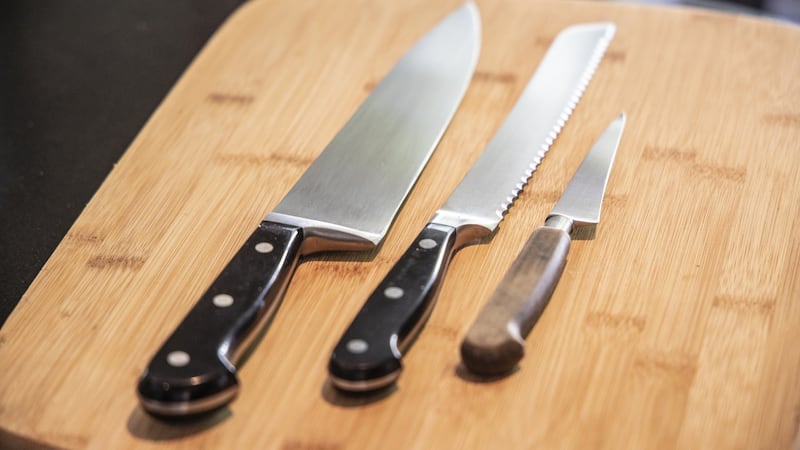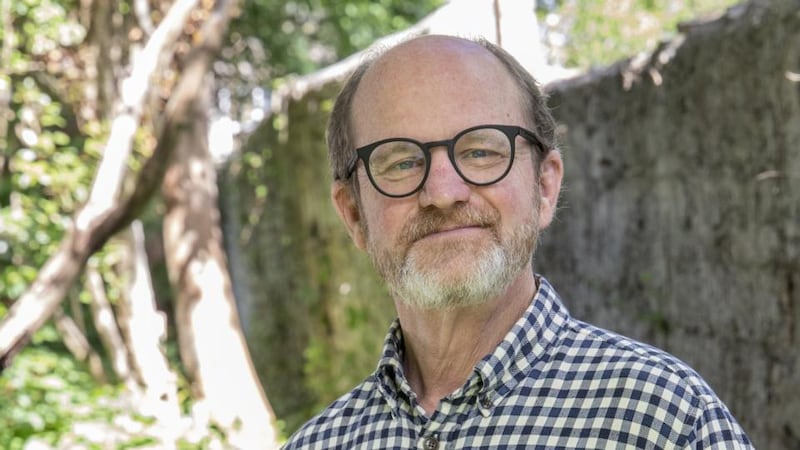Two weeks before Christmas 2019, my wife and I rented out our home of more than 30 years, packed most of our belongings in a giant storage unit and moved from southern California to Waterford, with only five suitcases. That's what being a grandparent can do.
All moves afford the opportunity for stripping away everything but the essentials and reinventing yourself, but this was particularly true for me this time. Not only was I leaving a much-loved home and friends, as well as decades of collected books, furniture and art, I was leaving behind my kitchen.
After more than 30 years as a food journalist and cookbook writer and all of the accumulated culinary paraphernalia that that entails, I moved into our new Irish home carrying just three knives. But we were going to be living across the street from our daughter and son-in-law and two grandbabies, so it was worth it. Time to start fresh.
And particularly in this time of Covid-19, when our access to kitchen tools and ingredients is necessarily limited, the need to make do with what we have, to go deeper rather than wider, offers real rewards.
I’ve never been a particularly gadget-happy cook. My philosophy has been that the shortest route to delicious is the best. So in packing, I figured that my only truly irreplaceable tools were my 40-year-old chef’s knife, and good paring and serrated knives. Everything else I could fill in as needed.
Shortly after arriving, I made up a shopping list of what it would take to re-establish my kitchen in Ireland. It was quite long and perhaps, I soon realised, overly influenced by watching too much Great British Bake-Off.
So I decided to start slow, to see what I really needed in this new world. Because our landlords had already supplied the house with three saucepans, a non-stick frying pan and a cutting board, I figured I had the very basics covered. And since there isn’t a high-end kitchen supply store in Waterford, my temptations were thankfully limited.
Wooden spoons
My first excursion was to the local Tesco, where I bought a digital scale and a set of measuring cups, as well as a baking dish and assorted wooden spoons, tongs, a rolling pin and other basic implements. The next was to TK Maxx, where I added an enamelled cast-iron casserole and a roasting pan.
Much to my surprise, that small haul turned out to be enough for the first several months, though I did pick up a few odds and ends here and there – cookie sheets and a cake pan for my daughter’s birthday. A cast-iron griddle for pancakes and toasties. Eventually I added a hand mixer and then a stick blender, so I could make those chunky vegetable soups I’ve become so fond of over here.
It turns out that I don’t need nearly as much equipment as I thought I would to feed my family well. Soups and stews, Sunday roasts . . . these are not dishes that require an elaborate batterie de cuisine.

And particularly since the now-eased lockdown, my ambitions to finally become a better baker have flown out the window. The last thing we need at our house is leftover cake and cookie trials lying around taunting the two of us.
Certainly, there have been times I longed for all of that All-Clad cookware I left behind (particularly the big sauté pan and the pasta pot that I used so often they had permanent spots on top of my stove). And then there’s my giant mortar and pestle, my food processor and stand mixer, and that hand-cranked machine for rolling out fresh pasta.
But those regrets have been fleeting. Somehow I’ve always found a way to make do with what I have.
In fact, instead of limiting my imagination, I have found that, if anything, these limitations have pushed me to be more creative. When you’ve stripped down to essentials, you’re forced to concentrate in a way that’s not necessary when you can make a quick run to the store for anything that might catch your fancy.
Carrots and potatoes
The same is true with ingredients, perhaps even more so. It is no slight against Irish groceries to point out that the fruit and vegetable selections here are vastly different from California’s. Fresh fruits and vegetables are a cult item there. Even in the US, the state is an anomaly, growing more than half of everything that the nation eats.
And as a journalist who had covered small farmers' and growers’ markets almost since their inception, I was certainly in the thick of it. Heck, in my own backyard I could pick avocados, Meyer lemons, persimmons, figs and tangelos.
Things are different in Ireland. But, as I discovered, that doesn’t mean worse. What might be lacking in variety seems to me to be made up for in quality. This may sound like one of those fatuous things cooks say, but I was gobsmacked the first time I sautéed carrots here. They are so sweet and richly flavoured. And I’ve got into the habit of roasting potatoes several times a week, experimenting with different varieties. The nuances may vary, but they’re always unmatchably crusty and earthy.
And thanks to Waterford’s Ardkeen Quality Food Store, I’m finding really terrific rhubarb, potatoes, greens, leeks and now, come warmer weather, tomatoes and strawberries that have all been farmed nearby. They also stock an impressive selection of Irish artisanal cheeses from the likes of St Tola and Cooleeney, equal to any I’ve had anywhere.
Delicious mackerel
Within walking distance of my house I have nearly a half-dozen of what in the US would be considered hipster “craft butchers”. Here it’s no big deal to find a place that cuts its own meat. And the quality is excellent. Christmas dinner was a lovely pork loin, crisp-skinned and moist. Even a simple roast chicken is so much more flavourful than what I had grown used to.
At the seafood counter, I find lovely cod and hake and the most delicious mackerel – perfect brushed with mustard and herbs and grilled or baked on a bed of vinegary onions to cut the richness.

Probably the biggest surprise, though, has been from an ingredient that I thought I knew fairly well. Americans have a long and well-documented love affair with bacon. But in the US, bacon is one thing, cooked one way – salted and smoked pork belly that is almost always sold sliced and then fried until shatteringly crisp. Traditionally it has been served just for breakfast, though these days you can find it on almost anything (let’s face it, you can’t go wrong with salty and crunchy).
The first time I shopped for bacon here, I almost turned around and walked out. How was I to make sense of so much choice? First of all, much Irish bacon comes from a different part of the pig – the back rather than the belly, which makes it a very different product. And there are so many options. Smoked or unsmoked? Lean or streaky? Sliced or whole? And what about bacon ribs?
After several months of experimentation, I can say that they are almost all delicious. When our first and last visitors from the US before the lockdown asked me to prepare an Irish dinner for them, I simmered a big slab of bacon with potatoes and cabbage. Three ingredients, one pot and carved into thick pink slabs and served with spicy mustard, it was food for the soul.
Russ Parsons is a former food editor of the Los Angeles Times. He is the author of How to Read a French Fry and How to Pick a Peach


















